Many people living in areas close to the North and South poles live in a state of complete darkness, known as polar nights. Nox spoke to two people about their experiences.
In the UK, we always complain about the time that it gets dark or how dismal it is when the sky turns pitch black by 4PM. But imagine living in complete darkness for months on end. That is what life is like for Eveline and Michelle.
A Polar night is when night time lasts around the 24- hour clock without sunlight. This only occurs inside the polar circles, so if you don’t live in the polar circle, you haven’t got to worry about this randomly happening. During polar nights, the sun stays below the horizon, sparing the land of any natural sunlight. Polar nights occur in countries such as Finland, Canada, and Sweden.
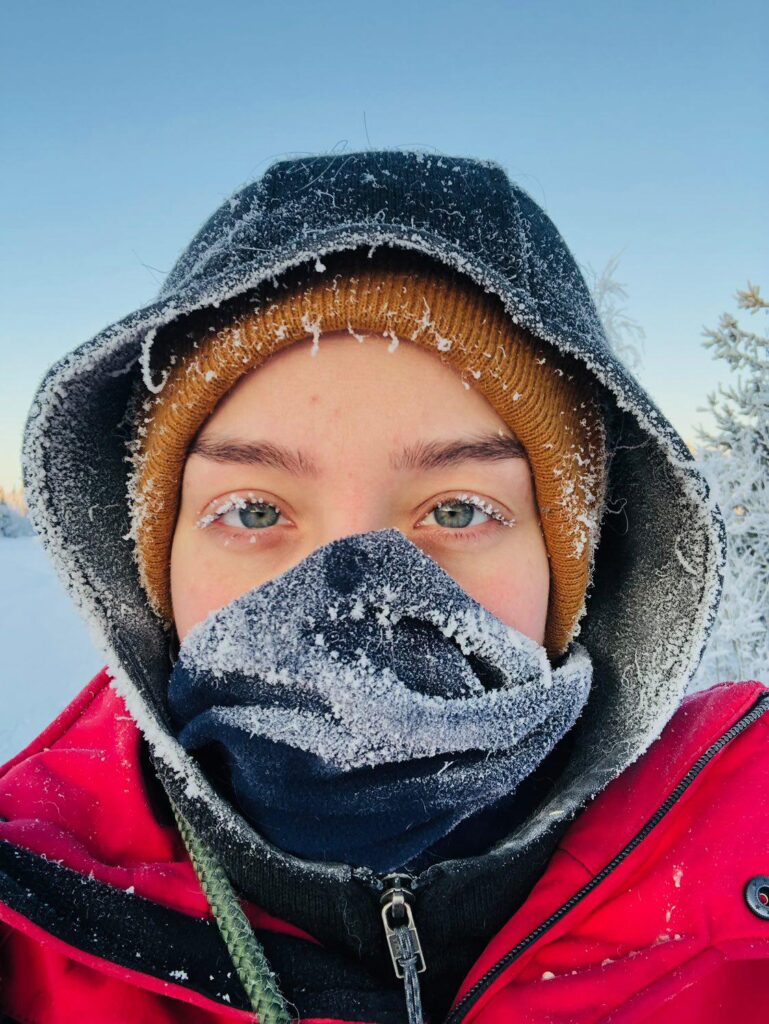
28-year-old Michelle Abert is originally from Vienna, Austria. However, she now lives next to Kiruna in Swedish Lapland. This winter marks her second polar night experience – and she plans on staying for more in the future.
The polar nights begin and end on different dates depending on where you live. In Kiruna, the polar nights started on the 11th of December 2022 and finished on the 2nd of January 2023. However, Michelle lived through total darkness for just shy of two months. The cabin that Michelle lives in does not have any running water or electricity.
Michelle’s career embraces all opportunities the harsh winters have to offer. She currently hosts dogsledding, snowmobile tours and she is also a photographer. Polar nights can sometimes ruin photographic opportunities. However, Michelle uses polar nights to her creative advantage. She says “when taking pictures, the polar night is especially inspiring because of all the colours and weather phenomena’s that you can only see up here.”
Michelle finds that she experiences feelings of excitement for Polar nights. “It is something special, that brings my view on the world into a new perspective. Also, it’s the perfect time to see northern lights and polar stratospheric clouds,” says Michelle.
Unsurprisingly, when Michelle finally does see the sun, it feels amazing. “I am surprised every time, how big the sun is and how great the sunshine feels on my skin. I don’t actively miss the sun, but when it is back and I can see the snow shimmering in the warm sunbeams, I am grateful to have her back,” Michelle says.
Other than charging and carrying a head torch everywhere she goes, she hardly has to adapt her routine. Where Michelle lives, they have a minimum of four hours of twilight. It is in this period that she tries to do the majority of the outside work. Michelle doesn’t stockpile or buy things in advance instead she has items which help her.
“I used to have a daylight alarm clock, but where I am living and working right now, I don’t have any electricity so I can’t use it anymore,” says Michelle. A light based alarm clock wakes you up slowly with light which mimics the sun. “I would recommend one for people that are thinking of staying above the Arctic Circle for a long time. I am also taking Vitamin D, to compensate for the lack of sunlight,” says Michelle.

Everyone who has experienced polar nights has a part of it which they find magical. “The polar stratospheric clouds that are super rare and best seen at the end of the polar night. They are bright rainbow clouds that look like an oil spill in the sky. They are ice clouds very high up that get lit up by the sun, which is coming from the perfect angle. Most tourists don’t know about them and are super surprised when they see them, but for the locals it’s special as well,” says Michelle.
Someone else who is fully familiar with days filled with darkness is Eveleine Lunde, 30, who lives at the opposite pole. Four years ago, Eveline traded life in her hometown of Asker, a short journey from the Norwegian capital of Oslo, for a quiet life in the snowy mountains of Svalbard. Eveline works in marketing for Hurtigruten which is Svalbard’s oldest full-service tour operator.
“I went on a sailing expedition on Svalbard for two months. It was me and four friends together on a small sailboat,” says Eveline. “Our goal was to sail around Spitsbergen, Svalbard’s biggest Island. It was the best experience of my life, and I fell in love with the beautiful nature. I love ice, snow, and glaciers, so Svalbard is perfect for me. After I came back to Oslo, I couldn’t stop thinking of Svalbard. I was not happy in Oslo as it was hard to do outdoor activities. I needed to be able to hike and enjoy nature whenever I wanted, and that was not possible in Oslo. After six months I decided to move and quit my job. I didn’t have a plan, but my goal was to move to Longyearbyen.”
The stunning scenery in Svalbard has become Eveline’s favourite part. “The mountains make me happy, and I love to have the possibility to go on a hike, go dog sledding or on a snowmobile tour right after I finish work. Everything is so easy when you live in such a small place. Everybody knows everyone and there’s always fun things to do,” says Eveline.
In Svalbard, the polar night begins on the 11th of November and ends on the 30th of January. During this time the sun is at least six-degrees below the horizon. It’s pitch-black 24/7. This length of darkness and knowing how long it lasts can affect anyone’s mental wellbeing. “The first weeks can be quite hard, as you need to adapt to a life without any natural light,” says Eveline. However, she uses a range of coping mechanisms like a good routine and being sociable.
“You get very tired and some days you can feel very unmotivated. But I take vitamins and try to stay positive on bad days. I also borrow my friend’s dog on days I feel a bit sad, and that helps a lot,” says Eveline. Cuddles and walks with a cute dog is bound to boost anyone’s mood.
When Svalbard first sees the sun, it is a very special time for the residents. “The feeling you’d get when you see the sun for the first time after four months is indescribable. I am so happy and get so much more energy,” says Eveline. On March 8th we can see the sun in Longyearbyen for the first time since October. We celebrate with “Solfestuka”- a big sun festival. We have a full week with concerts and events. On the day the sun returns, the whole town gathers to see the sun peak over the mountains and we sing songs and celebrate with edible “sun buns”. It’s a very special time,” says Eveline.
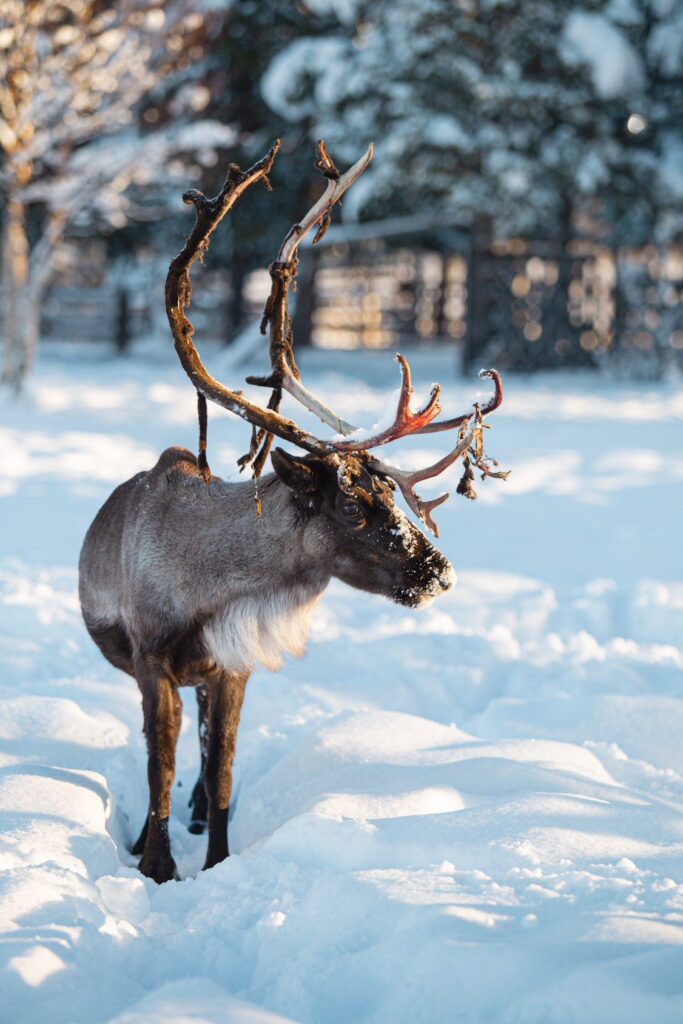
However, not every creature misses the sun. When the nights are long and dark, reindeer and polar bears like to take advantage of the cover of darkness and the cold weather. During the winter, residents often have to carry forms of protection in case they encounter polar bears. Eveline explains “When we have a polar bear hanging out right outside of Longyearbyen, it can be a bit scary to go on skiing trips in the valley alone. I like to go hiking and skiing, and I won’t stop doing that just because it’s dark. But I always bring my rifle and flare gun for protection, and I use a strong head lamp so I can see the surroundings.”
Many residents of countries which experience polar nights have bizarre wildlife encounters. Eveline recounts that just two years ago, her friend’s dogs were attacked by a polar bear when out sledding with a group of tourists. ”He immediately grabbed a big rope that they use to stop the sleds, and punched the polar bear right in the face. The polar bear was so shocked that he ran away. The same night we had a polar bear walking down the main street, right outside the local restaurant and supermarket. Luckily it was during Christmas and very early in the morning, so not many people were around. A friend of mine was going out to walk her dog and spotted the bear. She then called the governor, and they came and scared it away. Luckily, this is not normal and doesn’t happen very often. But you never know. That’s why we don’t lock our cars and most buildings are open so you can easily escape if you encounter danger.”
Both Eveline and Michelle have positives and negatives of the polar nights. But it seems the magic, the beauty of it, the animals and the sense of community, are a beaming light in the months of darkness. “There are a lot more polar nights to come for me,” says Michelle.
Eveline’s Instagram: Eveline Lunde (@evelinelunde) • Instagram photos and videos
Michelle’s Instagram: Michelle Abert (@michelle.abert) • Instagram photos and videos
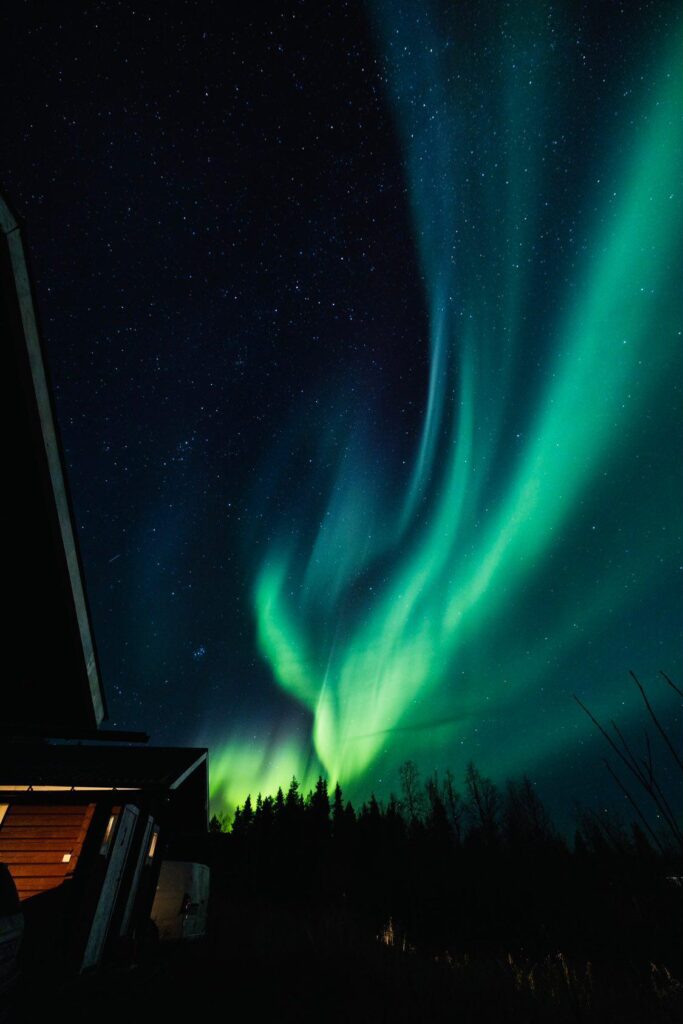
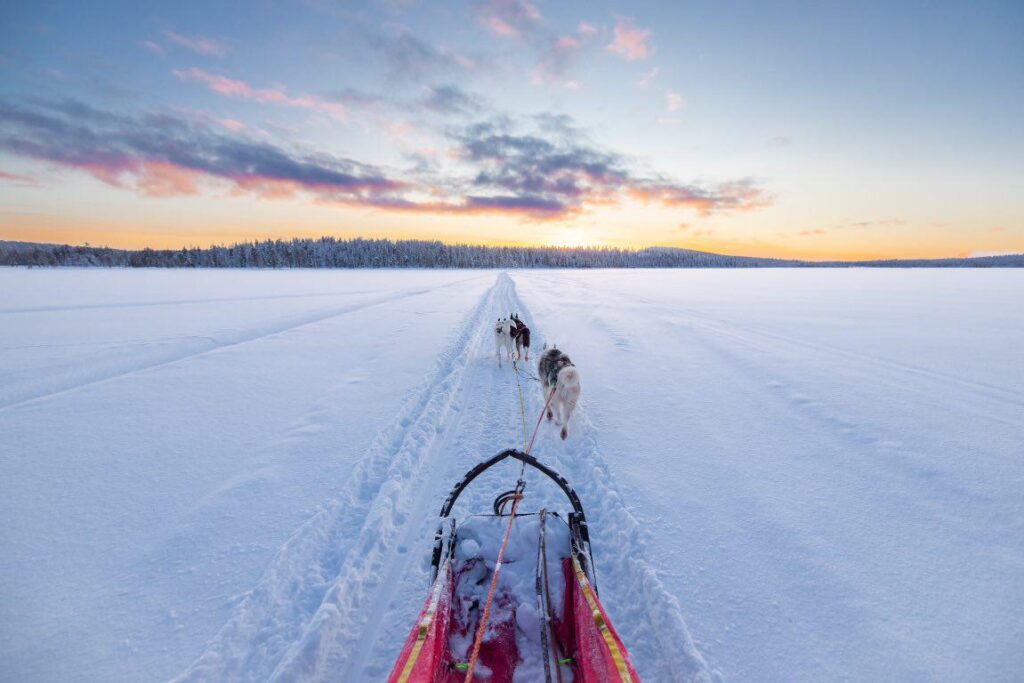
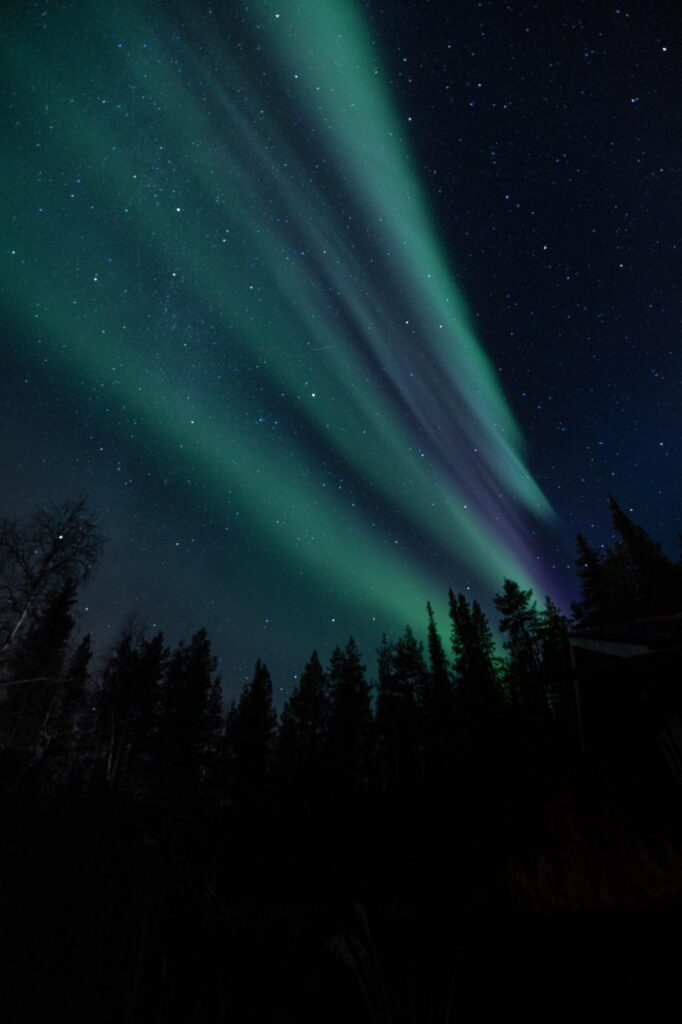

Article images by Michelle Abert